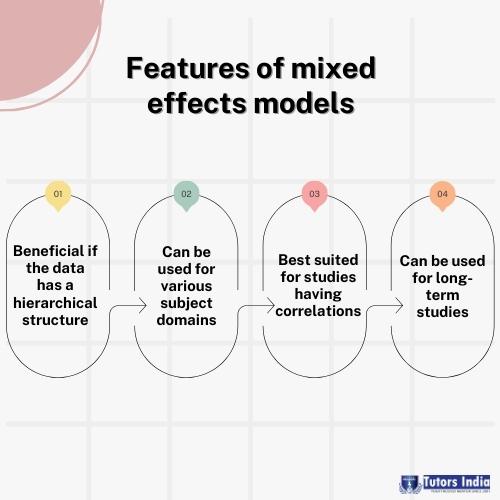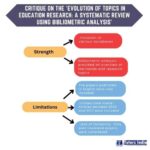Statistical Analysis: An insight on mixed effects models
Importance of statistical analysis in research
Statistical analysis is the cornerstone of research which helps the researcher answer the research question. Accurate statistical analysis is a must to ensure the validity and reliability of research findings, as well as the reproducibility of experiments. There has been an increasing emphasis on the importance of statistical analysis in research in medicine and life sciences (Panos, 2023).
Statistical tools for analysing data
Selecting the tool for analysing data often depends on the experimental design. The design must correspond to the aims of the study. The statistical method must be appropriate for the experimental design in order for the data analyses to answer the questions given in the introduction.
For simple experimental designs, methods like t test and simple correlations are used. Meanwhile, more complex software may be required for advanced research designs like Stata, SPSS and R. The most common statistical analysis methods in research include Student t Test, ANOVA, Mann Whitney Test, Kruskal Wallis Test, Pearson and Spearman correlation and regression analysis (Cichoń, M., 2020).
Mixed Effects Models

- Statistical analysis in most of the cases assume that the variables are independent of one another. Failing to account for this dependency in the data frequently results in an increase in false positives, which is a primary source of the problem of irreproducibility.
- For example, in animal studies where they are observed for a long duration that necessitate repeated measurements. In such cases, the data collected are structured as clusters, giving rise to dependence.
- In such cases, T test and ANOVA may not be suitable since these analytical techniques are best suited for independent variables (Yu Z, 2022).
- To know where T test and ANOVA may be applicable, check out our statistical analysis example on the impact of cessation programmes on alcoholism.
- Mixed-effects models, also called hierarchical linear models or multilevel models, are a type of statistical modelling technique that is used to analyze data with a hierarchical or nested structure.
- These models are especially beneficial when dealing with data that contains correlations or dependencies between observations, which contradict the assumptions of classic linear regression models.
- Mixed-effects models are commonly employed in numerous research areas, including psychology, epidemiology, education, and social sciences, as well as many others (Gordon KR, 2019).
- A subtype, known as linear mixed effects models (LMEs), can be used to answer research questions about both within-subjects and between-subjects effects and can thus be employed in studies studying condition differences, group differences, and individual differences.
- The LME approach provides more accurate estimates of effects in statistical analyses, allows researchers to include all subjects, even those who only contribute one trial (Heise, 2022).
Research directions using Mixed effects models
- A study on the use of mixed effects models for estimating rainfall and temperature
A study by Beroho et al. (2020) using mixed effects models for estimating temperature and rainfall during the period of 1979 to 2018 is highly effective. Research could be done to predict temperature, rainfall and soil erosion.
- Assessment of cognitive development in Infants and children using the mixed effects model
Research by Heise (2022) revealed that LMEs were highly effective in detecting differences in conditions where ANOVA was not. Research could be done on use of LME guides for studying more on Effect-related Potential (ERP), a crucial measure in assessing cognitive development in infants and children.
- A study on using the Mixed Effects models for improving study designs
The Hussey and Hughes model proposed by Li et al. (2022) sought to improve study designs using the mixed methods model. Future studies could deal with the estimate of the degree of correlation, called, Intra Class correlation (ICC) and the degree of variance which could help improve study designs for future research.
Conclusion
The concept of mixed effects model arose from a need to overcome the limitations of t test and ANOVA. Mixed Effects Models are beneficial when it comes to research with correlations or dependencies between observations. Mixed effects models can also be used in various subject domains, such as life sciences, social sciences and education. Future research directions using mixed effect models could be done on estimating rainfall and temperature, cognitive development and improving study designs, which helps improve validity and reliability.
About Tutors India
We are a team of expert academic writers who understand that statistical analysis in perhaps the most challenging part of a master’s dissertation. We offer numerous study materials that helps students have a clear understanding of the concept and the applications of statistical methods. We assist students accurately analyse data, which helps answer the research question and subsequently improve the quality of the dissertation.
To know more about how statistical analysis is done in various fields, check out our data analysis examples.
References
- Panos, G. D., & Boeckler, F. M. (2023). Statistical analysis in clinical and experimental medical research: simplified guidance for authors and reviewers. Drug Design, Development and Therapy, 1959-1961.
- Cichoń, M. (2020). Reporting statistical methods and outcome of statistical analyses in research articles. Pharmacological Reports, 72, 481-485.
- Yu, Z., Guindani, M., Grieco, S. F., Chen, L., Holmes, T. C., & Xu, X. (2022). Beyond t test and ANOVA: applications of mixed-effects models for more rigorous statistical analysis in neuroscience research. Neuron, 110(1), 21-35.
- Gordon KR. How Mixed-Effects Modeling Can Advance Our Understanding of Learning and Memory and Improve Clinical and Educational Practice. J Speech Lang Hear Res. 2019 Mar 25;62(3):507-524.
- Heise, M. J., Mon, S. K., & Bowman, L. C. (2022). Utility of linear mixed effects models for event-related potential research with infants and children. Developmental cognitive neuroscience, 54, 101070.
- Beroho, M., Briak, H., El Halimi, R., Ouallali, A., Boulahfa, I., Mrabet, R., … & Aboumaria, K. (2020). Analysis and prediction of climate forecasts in Northern Morocco: application of multilevel linear mixed effects models using R software. Heliyon, 6(10).
- Li, F., Hughes, J. P., Hemming, K., Taljaard, M., Melnick, E. R., & Heagerty, P. J. (2021). Mixed-effects models for the design and analysis of stepped wedge cluster randomized trials: an overview. Statistical Methods in Medical Research, 30(2), 612-639.

 Previous Post
Previous Post